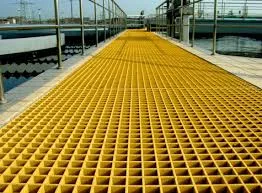
-
 Afrikaans
Afrikaans -
 Albanian
Albanian -
 Amharic
Amharic -
 Arabic
Arabic -
 Armenian
Armenian -
 Azerbaijani
Azerbaijani -
 Basque
Basque -
 Belarusian
Belarusian -
 Bengali
Bengali -
 Bosnian
Bosnian -
 Bulgarian
Bulgarian -
 Catalan
Catalan -
 Cebuano
Cebuano -
 China
China -
 China (Taiwan)
China (Taiwan) -
 Corsican
Corsican -
 Croatian
Croatian -
 Czech
Czech -
 Danish
Danish -
 Dutch
Dutch -
 English
English -
 Esperanto
Esperanto -
 Estonian
Estonian -
 Finnish
Finnish -
 French
French -
 Frisian
Frisian -
 Galician
Galician -
 Georgian
Georgian -
 German
German -
 Greek
Greek -
 Gujarati
Gujarati -
 Haitian Creole
Haitian Creole -
 hausa
hausa -
 hawaiian
hawaiian -
 Hebrew
Hebrew -
 Hindi
Hindi -
 Miao
Miao -
 Hungarian
Hungarian -
 Icelandic
Icelandic -
 igbo
igbo -
 Indonesian
Indonesian -
 irish
irish -
 Italian
Italian -
 Japanese
Japanese -
 Javanese
Javanese -
 Kannada
Kannada -
 kazakh
kazakh -
 Khmer
Khmer -
 Rwandese
Rwandese -
 Korean
Korean -
 Kurdish
Kurdish -
 Kyrgyz
Kyrgyz -
 Lao
Lao -
 Latin
Latin -
 Latvian
Latvian -
 Lithuanian
Lithuanian -
 Luxembourgish
Luxembourgish -
 Macedonian
Macedonian -
 Malgashi
Malgashi -
 Malay
Malay -
 Malayalam
Malayalam -
 Maltese
Maltese -
 Maori
Maori -
 Marathi
Marathi -
 Mongolian
Mongolian -
 Myanmar
Myanmar -
 Nepali
Nepali -
 Norwegian
Norwegian -
 Norwegian
Norwegian -
 Occitan
Occitan -
 Pashto
Pashto -
 Persian
Persian -
 Polish
Polish -
 Portuguese
Portuguese -
 Punjabi
Punjabi -
 Romanian
Romanian -
 Russian
Russian -
 Samoan
Samoan -
 Scottish Gaelic
Scottish Gaelic -
 Serbian
Serbian -
 Sesotho
Sesotho -
 Shona
Shona -
 Sindhi
Sindhi -
 Sinhala
Sinhala -
 Slovak
Slovak -
 Slovenian
Slovenian -
 Somali
Somali -
 Spanish
Spanish -
 Sundanese
Sundanese -
 Swahili
Swahili -
 Swedish
Swedish -
 Tagalog
Tagalog -
 Tajik
Tajik -
 Tamil
Tamil -
 Tatar
Tatar -
 Telugu
Telugu -
 Thai
Thai -
 Turkish
Turkish -
 Turkmen
Turkmen -
 Ukrainian
Ukrainian -
 Urdu
Urdu -
 Uighur
Uighur -
 Uzbek
Uzbek -
 Vietnamese
Vietnamese -
 Welsh
Welsh -
 Bantu
Bantu -
 Yiddish
Yiddish -
 Yoruba
Yoruba -
 Zulu
Zulu
frp products for thermal and nuclear power
FRP Products for Thermal and Nuclear Power Applications
Fiber Reinforced Polymer (FRP) products have emerged as critical components in the construction and maintenance of thermal and nuclear power plants. With their unique combination of strength, lightweight nature, and resistance to corrosion, FRP materials offer significant advantages over traditional materials like steel and concrete. As the demand for sustainable and efficient energy solutions continues to rise, the adoption of FRP products in power generation facilities is becoming increasingly prevalent.
Advantages of FRP in Power Generation
One of the foremost benefits of using FRP materials in power plants is their exceptional resistance to corrosion. Traditional metallic materials can deteriorate over time when exposed to harsh chemicals, high humidity, or extreme temperatures. In nuclear power facilities, where safety and reliability are paramount, the longevity and durability of materials used are crucial. FRP, composed of a polymer matrix reinforced with fibers (typically glass or carbon), provides excellent resistance to these environmental factors. This characteristic reduces maintenance requirements and extends the lifespan of plant components, leading to significant cost savings over time.
Moreover, FRP products are lightweight compared to their metal counterparts. This low density translates into easier handling and installation processes, which is particularly beneficial in the confined spaces often found in power generation plants. Lighter materials can also reduce the overall structural load, allowing for more innovative designs and potentially lowering construction and reinforcement costs.
Thermal Applications
In thermal power plants, FRP materials are utilized in various applications, including cooling towers, pipes, and tanks. For instance, cooling towers that employ FRP are less prone to fouling, allowing for more efficient heat exchange processes. The use of FRP in piping systems is also advantageous; it can withstand high temperatures and pressures without succumbing to corrosion, ensuring reliable fluid transport for both cooling and processing needs.
frp products for thermal and nuclear power

Additionally, the thermal insulation properties of FRP can help improve energy efficiency. Insulated FRP products can maintain optimal temperatures within systems, minimizing thermal losses. This is particularly vital in thermal power generation, where efficiency translates directly into reduced fuel consumption and lower operational costs.
Nuclear Power Applications
In nuclear power plants, safety is of utmost importance, and FRP materials are exceptionally well-suited for this environment. They can be utilized in areas requiring radiation shielding, structural reinforcement, and containment applications. Some FRP composites are designed specifically to withstand radiation exposure, making them ideal for components located near reactors or in spent fuel storage areas.
Furthermore, the use of FRP helps mitigate the risks associated with environmental and operational factors in nuclear facilities. Their non-conductivity is beneficial for electrical applications, and their ability to resist chemical reactions means they can be used in areas where spills or leaks might occur. These applications reduce the risk of equipment failure and enhance overall safety protocols.
Future Prospects
As power generation technologies evolve, the role of FRP products is expected to grow. Increased awareness of environmental sustainability and the need for efficient energy solutions will drive further investment in innovative materials like FRP. Researchers and manufacturers are exploring new composite formulations and manufacturing techniques to enhance performance, reduce costs, and expand applications.
In conclusion, FRP products represent a significant advancement in materials science for both thermal and nuclear power generation. Their strength, durability, and resistance to harsh conditions make them ideal for applications that require reliability and performance. With ongoing research and development, the potential for FRP products in the energy sector is expansive, setting the stage for a more sustainable and efficient future in power generation.









